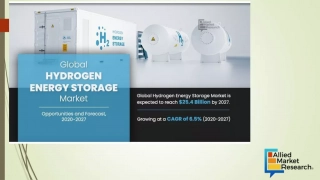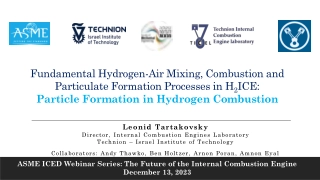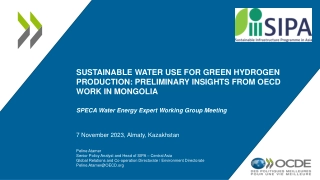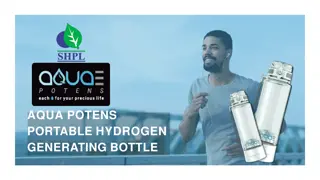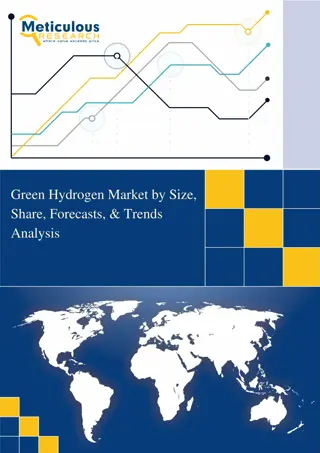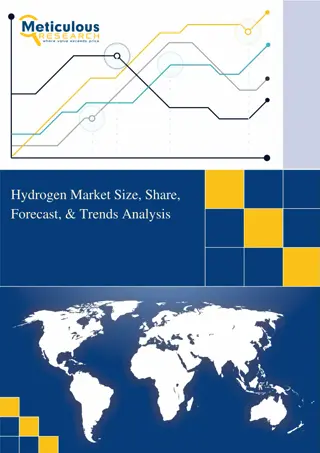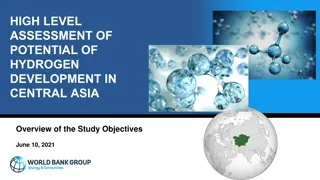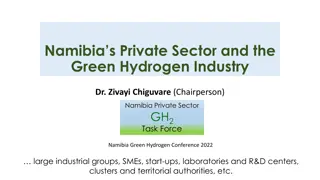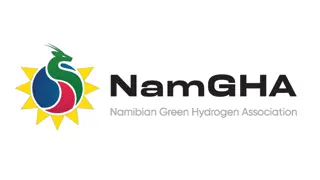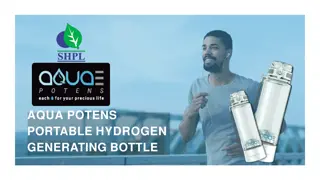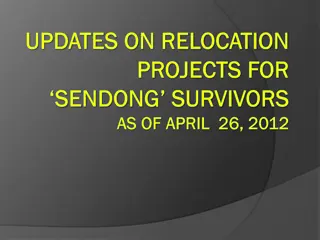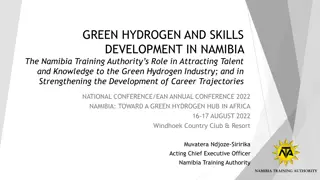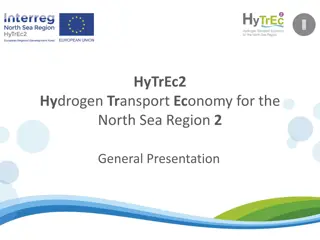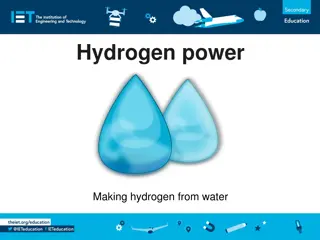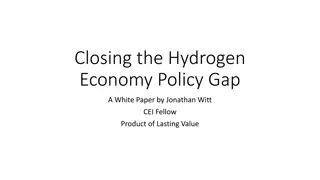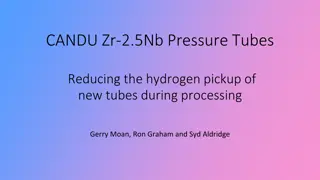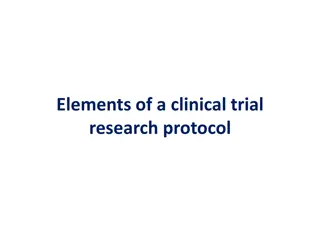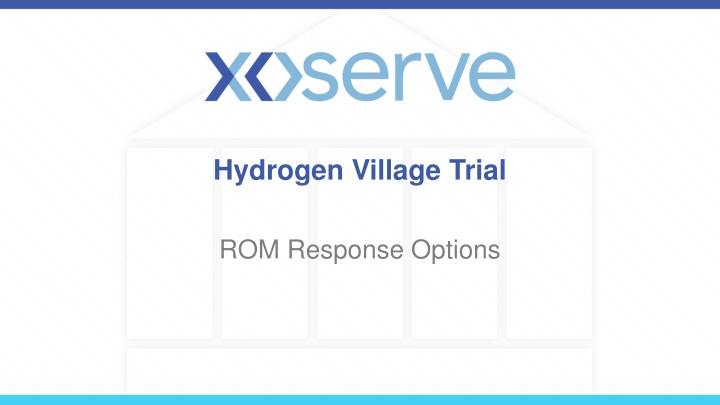
Hydrogen Village Trial ROM Response Options
The 100% Hydrogen Village Trial aims to demonstrate that end consumers are not negatively impacted by repurposing a gas network. This trial involves 2000 Supply Meter Points covering domestic and smaller industrial/commercial premises. Various workshops have been held to discuss potential approaches and system changes required. The potential solution options and impacts, including system and process changes, are outlined. One option involves creating 13 Hydrogen LDZs mirroring existing LDZs to support the transition to hydrogen usage.
Download Presentation

Please find below an Image/Link to download the presentation.
The content on the website is provided AS IS for your information and personal use only. It may not be sold, licensed, or shared on other websites without obtaining consent from the author. If you encounter any issues during the download, it is possible that the publisher has removed the file from their server.
You are allowed to download the files provided on this website for personal or commercial use, subject to the condition that they are used lawfully. All files are the property of their respective owners.
The content on the website is provided AS IS for your information and personal use only. It may not be sold, licensed, or shared on other websites without obtaining consent from the author.
E N D
Presentation Transcript
Hydrogen Village Trial ROM Response Options
Hydrogen Village Background HVT Workshops High Level Costs/Impact The 100% Hydrogen Village Trial is to demonstrate end consumers are not adversely affected through a repurposed gas network. The Village trial will comprise of 2000 Supply Meter Points covering Domestic and smaller Industrial commercial premises. Throughout the various Hydrogen Village/Town workshops held between industry stakeholders, a number of potential approaches have been discussed surrounding the system and process changes needed to facilitate these trials. CDSP collated a number of generic requirements (that span all potential solution options) to aid in a Rough Order of Magnitude (ROM) looking to provide Shippers and Suppliers guidance on the potential impacts to CDSP system/processes.
Potential Solution Option(s) and Impacts One Hydrogen LDZ associated with each physical LDZ (13) Calorific Value Multiplication Factor Conversion Factor SYSTEM IMPACTS: SAP ISU SYSTEM IMPACTS: Gemini SAP ISU AMT/SAP PO Portal SAP BW SAP BODS Data Discovery Platform SYSTEM IMPACTS: SAP ISU Data Discovery Platform SYSTEM IMPACTS: Marketflow SAP PO SAP ISU PROCESS IMPACTS: Conversion Factor update RGMA PROCESS IMPACTS: Volume Factor Analysis is required for impacts to Gemini and UK Link Read upload Estimation Reconciliation Factor CV direct into UK Link PROCESS IMPACTS: SPA RGMA CSS Process PROCESS IMPACTS: Gemini (UK Link processes incl. Billing, CV, Smearing, EUC, MPRN amendment) UK Link System (i.e. Billing, CV, Smearing, EUC, MPRN amendment) UK Link Portal UK Link Online Services Data Discovery Platform TIMESCALES: Approx. 60 weeks (effort) TIMESCALES: Approx. 130 weeks (effort) TIMESCALES: Approx. 125 weeks (effort) TIMESCALES: Approx. 60 weeks (effort) COMPLEXITY: Medium COMPLEXITY: High COMPLEXITY: High COMPLEXITY: Medium
Option Description of Option User Impacts Benefits Considerations There are currently 13 LDZs throughout the industry which are the basis of multiple processes i.e., charging rates, demand estimation, Unidentified Gas (UIG). Users will need to also replicate the LDZs in their systems/processes Users will need to identify the relevant MPRN by postcode (existing) and by identifying if the MPRN is included in a 100% hydrogen project Users will need to be able to transfer MPRN s between existing LDZ s and the mirrored hydrogen LDZ s As a new LDZ has never been created within the gas industry the impacts of this are untested both within central systems and other user systems Higher cost/effort prior to a decision on 100% hydrogen government decision Only been assessed against 100% hydrogen, hydrogen blend support not yet considered LDZ s are a base data item for a number of users, not limited to the energy Industry, impact could be hard to assess outside of CDSP Will this work for a new Hydrogen code, outside of UNC? MPRNs will need to be identified as Hydrogen MPRN s as we transition Actual energy will be calculated (as it will be using the hydrogen CV) Can support the roll out of hydrogen following government decision(s) Multiple 100% hydrogen projects can be supported This option should enable a smoother transition as customers are moved from the gas LDZ through to the Hydrogen LDZ 13 Hydrogen LDZs mirroring the existing LDZs A further 13 LDZs that are specifically for the use of 100% hydrogen would be created by mirroring the existing LDZs with new LDZ identifiers (i.e., the hydrogen LDZ for SO could be HSO). (One Hydrogen LDZ associated with each physical LDZ (13)) MPRNs in one of the mirrored hydrogen LDZs will use a hydrogen CV to calculate energy. Actual energy will be calculated (as it will be using the hydrogen CV) Multiple 100% hydrogen projects can be supported Could potentially be used as a solution for blending projects as each project could have a different CV When calculating energy for MPRNs included in a 100% hydrogen trial a hydrogen CV will be used instead of the current FWACV/LDZ CV. This option excludes MPRNS from existing processes creating complexity and risk Natural Gas CVs are calculated at an LDZ level and published on MIPI will the hydrogen CV be made available through the same mechanism A declared CV (rather than a calculated daily CV) could be used Only been assessed against 100% hydrogen, hydrogen blend support not yet considered Users will need to identify the hydrogen project and use the applicable hydrogen CV when calculating energy Users will need to flow the hydrogen CV to smart metering Calorific Value (CV) The daily hydrogen CV will be excluded from Flow Weighted Average Calorific Value calculations and shared separately.
Option Description of Option User Impacts Benefits Considerations The Gas (Calculation of Thermal Energy) Regulations specifies the conversion factor that should be used to calculate energy. Users will need to use the specific conversion factor when calculating energy Users will need to flow the hydrogen conversion factor to smart metering Rather than calculate actual hydrogen energy, energy is transformed to a natural gas equivalent Changes may be required to regulations Where a specific conversation factor is required (AQ greater than 732,000) a separate hydrogen site specific conversation factor will need to be calculated for every impacted MPRN Only been assessed against 100% hydrogen, hydrogen blend support not yet considered Minimal change to central systems/processes Conversion Factor (CF) A specific conversion factor would be calculated and applied for MPRNs included in a project which would convert the energy to a natural gas energy equivalent Rather than calculate actual hydrogen volume, volume is transformed to a natural gas equivalent The multiplication factor does not form part of the volume/energy calculation in smart meters As the multiplication factor is added to MDD it can only be used for hydrogen (MDD cannot support one meter with different multiplications factors) Only been assessed against 100% hydrogen, hydrogen blend support not yet considered Large meters that require a actual multiplication factor will require a separate hydrogen multiplication factor to be calculated and applied in MDD A specific multiplication factor would be calculated and applied to a hydrogen meter through Market Domain Data (MDD). When the hydrogen meter is installed at a property the multiplication factor would convert the volume to a natural gas volume equivalent Users will need to use the specific multiplication factor when calculating energy This solution is being used for H100 (XRN5298) Multiplicati on Factor (MF)
Next Steps Suppliers/Shippers to review impact of options on their own internal systems and provide an assessment of possible impacts with a suggested costing range (i.e. could cost from 150-350k) detailing system impacts such as slide 3. Responses to be provided to the Xoserve Decarbonisation mailbox: box.xoserve.decarbonisation@xoserve.com no later than Friday 2nd December 2022. The Xoserve Decarbonisation team will then collate all responses and create a shared view by Constituency or Persona (dependent upon the feedback received) and this consolidated view will be shared with the Hydrogen Village project teams to enable full costs to be built into the detailed designs.

